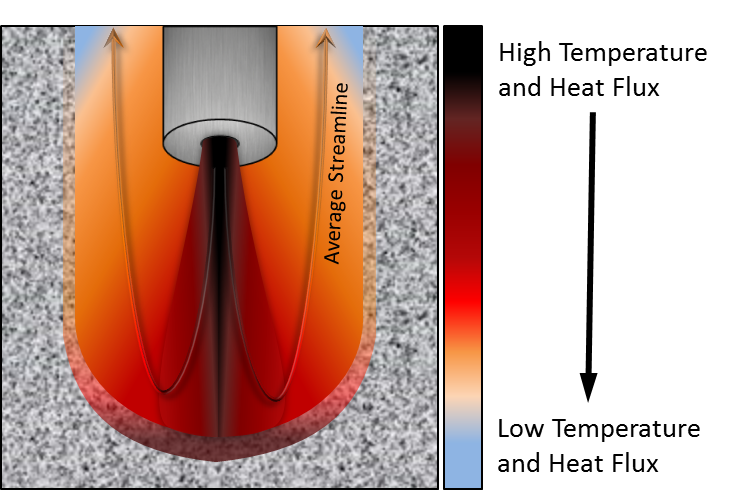Thermal Spallation of Rock Using Supercritical Water
Researcher: Sean Hillson
Principal Investigator: Professor Jefferson Tester
An obstacle hindering implementation of EGS is the large up-front capital costs for drilling and reservoir stimulation. For EGS to become more economically viable, particularly in low grade regions, new drilling technologies are being developed that could significantly reduce the cost to drill the deeper wells needed for low-grade EGS. One such technology is hydrothermal jet drilling, which utilizes a jet of supercritical water to impact and heat the rock, causing the rock to "spall", i.e., eject small rock fragments to relieve thermal and mechanical stress. Hydrothermal drilling has the potential to lower drilling costs over conventional methods by increasing penetration rates and avoiding the transit time associated with replacing worn drill bits since the bottom hole assembly does not contact the rock. The jet may be heated by means of electrical resistance or it may consist of a hydrothermal flame to achieve the high temperatures necessary for spallation; the jet may also contain a small amount of chemicals which can enhance the spallation mechanism by weakening the rock structure by means of silica dissolution.
Although primarily focused on experimental studies, the project has also theoretical part in parallel. The drilling rates will be measured by analyzing the chemical composition of particulate reaction products, reactor temperature distributions and remnant rock properties. In order to understand rock destruction mechanics, models of the different physical processes occurring in the reactor will be made, and reconciled to experimental results. The developed models will take into account heat transfer from the jet and within the rock, the distribution of thermomechanical stress throughout the rock matrix caused by the high thermal gradient and differential thermal expansion amongst the various minerals, and the kinetic effect of chemical dissolution on the rock's strength and integrity. The research conducted in this project will hopefully lead to an increased understanding of the mechanisms of rock spallation/dissolution, as well as demonstrate the commercial viability of a novel drilling method.

